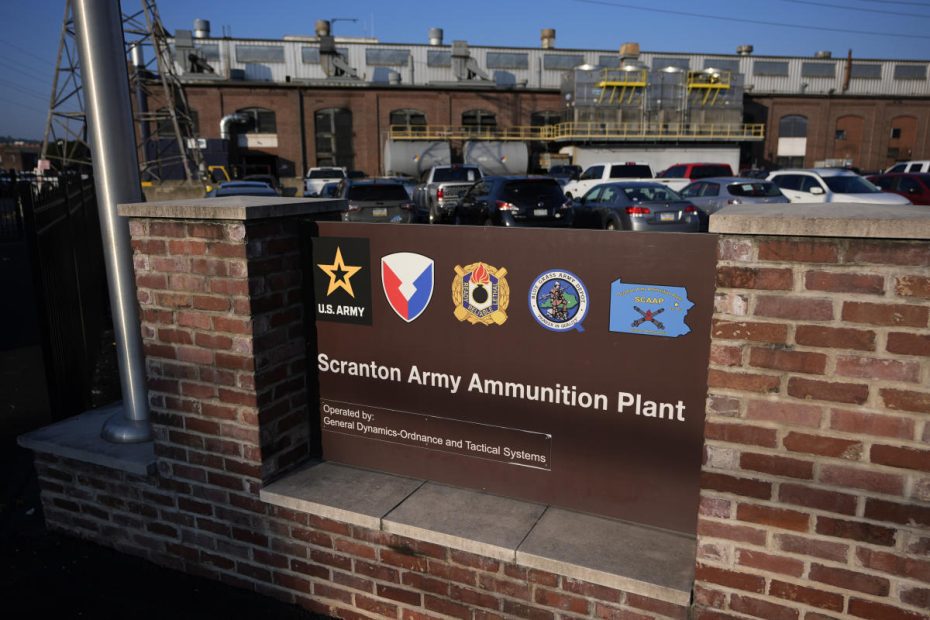SCRANTON, Pa. (AP) — A Pennsylvania munitions plant that makes a key artillery projectile in Ukraine’s fight against Russia has managed to boost production by 50 percent to meet rising demand. More capacity will be put into operation.
Government officials this week unveiled the production increase and showcased the ongoing $400 million modernization of the historic plant.
The Scranton Army Ammunition Plant cuts and forges 2,000 pounds (907 kilograms) of steel rods into 155mm howitzer rounds that are then shipped to Iowa to be filled with explosives and fitted with fuses. From there, many of them go to the fight in Ukraine, where they are in high demand.
The Scranton plant, along with two other munitions plants in nearby Wilkes-Barre, recently increased production from 24,000 rounds a month to 36,000 rounds a month. Three new production lines are in development that will allow the Scranton plant to produce even more of the critical munitions, the plant's top official said.
“Right now we're focused on 155. That's about all we're focused on,” Richard Hansen, the Army commander's representative at the plant, said Tuesday as he gave news media a tour of the sprawling plant near downtown Scranton. “We're working hard to make sure we meet the goal that the Pentagon has set.”
The U.S. has sent more than 3 million 155mm artillery shells to Ukraine since Russia invaded the country in 2022, according to government figures. Earlier this month, the White House announced another $125 million in weapons to help Ukraine in its military operations against Russia, including 155mm shells.
The Scranton plant began as a locomotive repair shop in the early 20th century before the Army bought it and converted it into a large-caliber artillery production facility for the Korean War. Since 2006, it has been operated by General Dynamics under contract with the U.S. government, which owns the plant.
Officials are about halfway through one of the largest modernization projects in the plant's history, with about 20 ongoing projects. Tuesday's tour included a new production line with a sleek new machine that will do the work of three, helping to make the most of space in the 500,000-square-foot (46,452-square-meter) plant.
According to a General Dynamics spokesman, the plant employs about 300 people. Some of them have been there for decades, operating the equipment that cuts the steel, heats it to 2,000 degrees Fahrenheit (1,093 degrees Celsius), and forges, machines, washes and paints the finished rounds. Each round is inspected by hand at every step to ensure it meets specifications.
“We want it to go where we send it,” Hansen said. “We want it to go as far as we need it to do its job. Lives depend on it — the lives of the gun crew, the lives of innocent civilians depend on this round doing exactly what we want it to do in the field.”

